Old Charter Oak French Oak Bourbon
$795 Original price was: $795.$499Current price is: $499.
Discover the refined elegance of French Oaked Bourbon. This premium Kentucky straight bourbon, aged in French oak barrels, offers a sophisticated blend of caramel, vanilla, and subtle fruit notes with a smooth, velvety finish. At 92 proof, it’s perfect for sipping neat or crafting luxurious cocktails.
French Oak Bourbon: Your Guide to a Sophisticated Twist on American Classic
If you’re exploring the world of premium bourbon, you’ve likely encountered the term “French Oak” appearing more frequently on labels and in conversations among enthusiasts. French Oak Bourbon represents an exciting innovation in American whiskey-making, combining traditional bourbon craftsmanship with European oak influence. This comprehensive guide will walk you through everything you need to know about this distinctive style, from what makes it different to why it might become your new favorite pour.
What is French Oak Bourbon?
Let’s start with the fundamentals. French Oak Bourbon is Kentucky straight bourbon whiskey that has been finished or aged in barrels made from French oak (Quercus robur) rather than the traditional American white oak (Quercus alba). While all bourbon must start its aging journey in new charred American oak barrels, some distillers are now adding a secondary aging period in French oak casks to create unique flavor profiles.
The key thing to understand is that French Oak Bourbon isn’t a different category of whiskey—it’s still 100% bourbon that meets all legal requirements. The French oak influence comes through either as a finishing period (where fully matured bourbon spends additional time in French oak) or through innovative aging techniques using French oak in the primary aging process where regulations allow.
Why French Oak Makes a Difference
The type of oak used in barrel-making significantly impacts the whiskey’s final character. French oak differs from American oak in several important ways:
-
Grain Structure: French oak has a tighter grain, allowing for slower oxygen exchange and more gradual flavor extraction
-
Chemical Composition: Contains different levels of lignin, tannins, and lactones—the compounds that create vanilla, spice, and oak flavors
-
Traditional Use: The same type of oak used for aging fine wines like Bordeaux and Burgundy, as well as Cognac
This combination creates French Oaked Bourbon with distinctive characteristics that set it apart from traditionally aged bourbons.
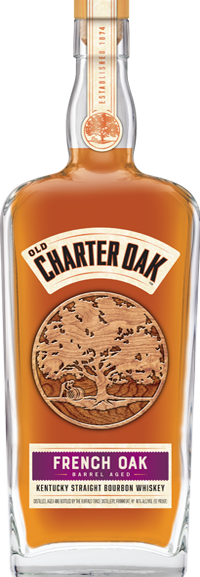
The Flavor Profile: What Makes French Oak Bourbon Unique
The most important question for any whiskey drinker is: what does it taste like? French Oak Bourbon typically exhibits a more refined, complex profile compared to its American oak-aged counterparts.
The Aroma (The “Nose”)
When you first nose a French Oak Bourbon, you’ll likely notice:
-
Elegant Spice: Softer baking spices compared to the bold cinnamon of American oak
-
Floral Notes: Hints of rose, violet, or dried flowers
-
Dark Fruit: Characteristics reminiscent of red wine—think cherry, plum, and fig
-
Subtle Vanilla: A more delicate vanilla presence than the assertive vanilla of American oak
The Flavor (The “Palate”)
The tasting experience reveals the true magic of French oak aging:
-
Smooth Entry: Noticeably softer tannins create a smoother initial sip
-
Complex Fruit: Layers of dark cherry, raspberry, and sometimes tropical fruit notes
-
Baking Spices: Cinnamon and nutmeg are present but more integrated and less aggressive
-
Creamy Texture: A silkier mouthfeel than traditionally oaked bourbons
-
Elegant Sweetness: Caramel and vanilla notes are more refined and less sugary
The Finish (The “Aftertaste”)
The finish often demonstrates why French Oaked Bourbon has gained such popularity:
-
Long and Elegant without being overly drying
-
Fruit-Forward with lingering dark fruit notes
-
Balanced Tannins that provide structure without bitterness
-
Complex Spice that evolves rather than fading quickly
Tasting Tip: To fully appreciate French Oak Bourbon, try it alongside a traditional American oak-aged bourbon of similar quality and age. The side-by-side comparison will highlight the French oak’s influence—particularly the softer tannins and more complex fruit notes.
French Oak vs. American Oak: Understanding the Difference
To truly appreciate French Oak Bourbon, it helps to understand how it compares to traditional bourbon aging:
American White Oak Characteristics
-
Bold Vanilla: Higher vanillin content creates pronounced vanilla notes
-
Strong Coconut: Distinct coconut aromas from lactones
-
Aggressive Spice: More forward cinnamon and baking spices
-
Robust Character: Generally bigger, bolder flavors
French Oak Characteristics
-
Subtle Vanilla: More delicate vanilla presence
-
Elegant Spice: Softer, more integrated baking spices
-
Dark Fruit: Wine-like fruit characteristics
-
Silky Tannins: Smoother, less drying mouthfeel
The difference comes down to personality—American oak tends to be bold and assertive, while French oak is refined and complex. Neither is inherently better, but they offer different experiences for different occasions and preferences.
Notable French Oak Bourbon Expressions
Several distilleries have embraced the French Oak Bourbon trend with notable expressions:
Old Charter French Oak
One of the most well-known examples, Old Charter French Oak was actually a pioneer in this category. This expression features:
-
8 Years Aging: Substantial primary aging before French oak finishing
-
French Oak Finish: Additional maturation in French oak casks
-
Approachable Proof: Typically bottled around 80 proof
-
Soft Character: Known for its smooth, easy-drinking profile
While Old Charter French Oak has become increasingly difficult to find, it remains a benchmark for the category and a sought-after bottle for collectors.
Jefferson’s Reserve
Jefferson’s has experimented extensively with French oak finishing, creating expressions that showcase:
-
Wine Cask Influence: Sometimes using French oak previously used for wine
-
Complex Blending: Combining French oak-finished whiskey with traditional bourbon
-
Rich Fruit Notes: Pronounced dark fruit characteristics
Woodford Reserve Double Double Oaked
While primarily American oak, Woodford’s experimentation includes French oak elements in some limited editions, demonstrating how major producers are exploring this technique.
The Science Behind French Oak Bourbon
Understanding why French oak creates different flavors requires a quick look at the science:
Chemical Composition Differences
-
Tannin Levels: French oak typically has higher tannin levels, but they’re “softer” tannins that integrate better
-
Lactone Content: American oak has higher levels of lactones that create coconut and vanilla notes
-
Oxidation Rate: The tighter grain of French oak allows for slower oxygen exchange
Extraction Process
The charring process—required by law for bourbon barrels—works differently with French oak:
-
Different wood density affects how the char layer forms
-
Varied chemical composition means different flavor compounds are released
-
The interaction between the whiskey and wood changes based on oak type
How to Enjoy French Oak Bourbon
This sophisticated bourbon style can be appreciated in several ways:
For Maximum Appreciation
-
Neat: The best way to experience the subtle complexity
-
With a Drop of Water: Can release additional aromatic compounds
-
In a Glencairn Glass: The tulip shape concentrates the elegant aromas
For Casual Enjoyment
-
On a Large Ice Cube: Minimal dilution preserves the character
-
In Simple Cocktails: Works well in spirit-forward drinks like Old Fashioneds
Food Pairings
The wine-like character of French Oaked Bourbon makes it excellent with food:
-
Dark Chocolate: Complements the dark fruit notes
-
Roasted Nuts: Highlights the elegant spice characteristics
-
Hard Cheeses: Pairs well with the structured tannins
-
Fruit-Based Desserts: Enhances the natural fruit flavors
Price Range and Value Proposition
French Oak Bourbon typically occupies a premium position in the market:
Pricing Expectations
-
Entry-Level: $40-60 for basic French oak-finished expressions
-
Mid-Range: $60-90 for well-aged examples with significant French oak influence
-
Premium: $90+ for limited editions and extensively aged versions
Value Considerations
When evaluating French Oak Bourbon value, consider:
-
Production Cost: French oak barrels are significantly more expensive than American oak
-
Aging Time: Many expressions involve additional finishing time
-
Complexity: The sophisticated flavor profile justifies premium pricing for many enthusiasts
-
Availability: Limited production runs can affect pricing
The Future of French Oak in Bourbon
The trend toward French Oak Bourbon shows no signs of slowing down:
Innovation Continues
Distillers are experimenting with:
-
Different French Oak Forests: Each region produces oak with slightly different characteristics
-
Wine Cask Finishing: Using barrels that previously held French wines
-
Hybrid Approaches: Combining French and American oak in various proportions
Market Growth
As consumers become more educated about oak influence, demand for French Oaked Bourbon continues to increase, encouraging more distilleries to experiment with this technique.
Finding and Selecting French Oak Bourbon
Locating quality French Oak Bourbon requires some knowledge:
Reading Labels
Look for specific terminology:
-
“Finished in French Oak”
-
“Aged in French Oak Barrels”
-
“French Oak Cask Finish”
Research Brands
Some producers known for quality French Oak Bourbon include:
-
Jefferson’s: Extensive experimentation with French oak
-
Barrell Craft Spirits: Limited edition French oak finishes
-
Various Craft Distillers: Often more flexible with innovative aging
Tasting Before Buying
When possible:
-
Visit whiskey bars that feature premium selections
-
Attend tasting events where French oak expressions might be featured
-
Start with smaller bottles or samples when available
For those interested in the technical aspects of oak aging, the Distilled Spirits Council of the United States provides excellent resources on production standards and innovations.
French Oak Bourbon Review: The Final Verdict
After exploring all aspects of this distinctive bourbon style, here’s the essential assessment:
The Bottom Line: French Oak Bourbon offers a sophisticated, complex alternative to traditional bourbon that’s worth exploring for any serious whiskey enthusiast. The elegant flavor profile, with its emphasis on dark fruit and integrated spices, provides a unique drinking experience that bridges the worlds of bourbon and fine wine.
Who Should Try French Oak Bourbon:
-
Bourbon drinkers looking for something new and different
-
Wine enthusiasts curious about whiskey
-
Those who find traditional bourbon too spicy or oaky
-
Collectors interested in innovative aging techniques
Might Disappoint Those Who Prefer:
-
Bold, aggressive bourbon profiles
-
Traditional, classic bourbon character
-
Budget-friendly everyday drinkers
-
High-proof, intense whiskey experiences
French Oak Bourbon represents the evolving nature of American whiskey—honoring tradition while embracing innovation. Whether it becomes your daily drinker or an occasional special pour, it’s a style every bourbon lover should experience at least once.
Frequently Asked Questions (FAQ)
1. Is French Oak Bourbon actually bourbon?
Yes, French Oak Bourbon is 100% legitimate bourbon that meets all legal requirements. The key is that it starts its aging in new charred American oak barrels as required by law. The French oak influence typically comes during a finishing period after initial maturation, which is perfectly legal and increasingly common for creating unique expressions.
2. Why is French Oak Bourbon often more expensive?
Several factors contribute to the higher cost: French oak barrels are significantly more expensive than American oak (often 3-5 times the cost), the additional finishing time increases production time and storage costs, and many French oak expressions are produced in smaller batches with more limited availability.
3. What’s the difference between French oak finish and full French oak aging?
A French oak finish means the bourbon completed its primary aging in traditional American oak, then spent additional time (typically 6-24 months) in French oak casks. Full French oak aging would mean the entire aging process occurred in French oak, which is rare for bourbon due to legal requirements and cost considerations.
4. Can I use French oak chips to create similar flavors at home?
While home enthusiasts sometimes use French oak chips or spirals to experiment with flavors, it’s difficult to replicate the controlled conditions of barrel aging. The results can be interesting but typically lack the integration and complexity of professionally produced French Oak Bourbon.
5. Are there any mass-market affordable French Oak Bourbons?
True French Oak Bourbon remains primarily a premium category, though some larger producers are beginning to experiment with more affordable expressions. Currently, most widely available options fall into the $40+ range, with the most sought-after bottles commanding significantly higher prices.
Be the first to review “Old Charter Oak French Oak Bourbon” Cancel reply
Related products
Buffalo Trace
Buffalo Trace
Champagne
Buffalo Trace
Buffalo Trace

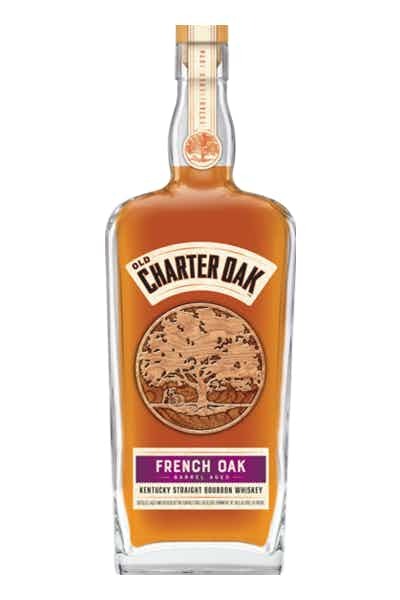
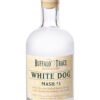
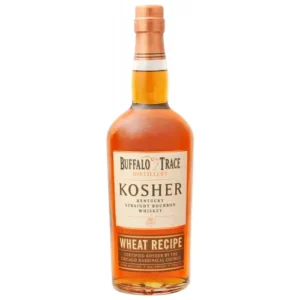
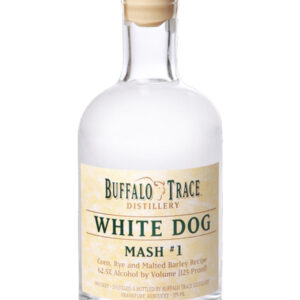

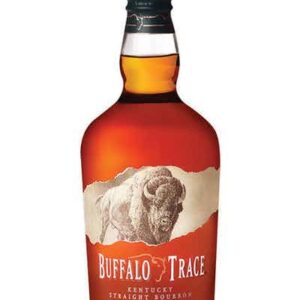
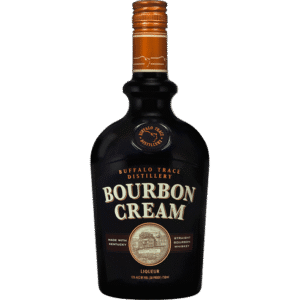
Reviews
There are no reviews yet.